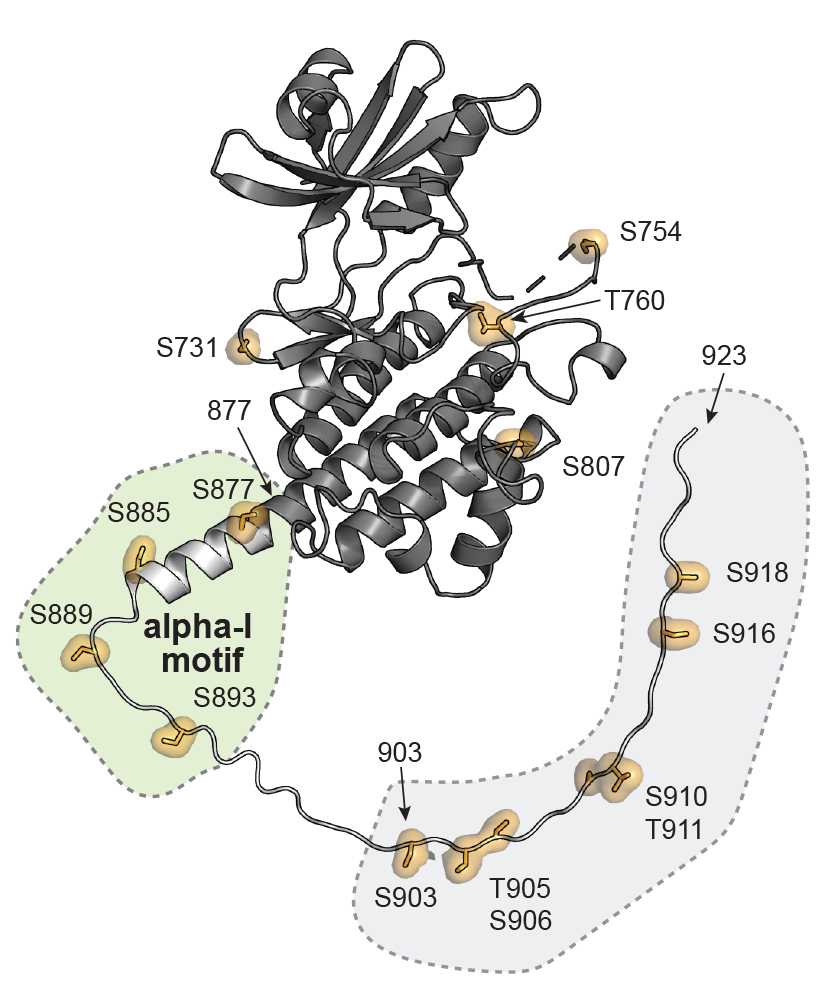Researchers uncover a key link in legume plant-bacteria symbiosis
Researchers at Aarhus University have unveiled a groundbreaking discovery shedding light on the intricate play between legume plants and nitrogen-fixing bacteria. Their study, published in PNAS, details the crucial role played by phosphorylation in driving the formation of symbiotic organs, known as nodules, on plant roots. The long-term goal is to enable symbiosis in root nodules in important crops such as barley, maize and rice to avoid the use of chemical fertilizers.

Legume plants have the unique ability to interact with nitrogen-fixing bacteria in the soil, known as rhizobia. Legumes and rhizobia engage in symbiotic relations upon nitrogen starvation, allowing the plant to thrive without the need for externally supplied nitrogen. Symbiotic nodules are formed on the root of the plant, which are readily colonized by nitrogen-fixing bacteria. The cell-surface receptor SYMRK (symbiosis receptor-like kinase) is responsible for mediating the symbiotic signal from rhizobia perception to formation of the nodule. The activation mechanism of the receptor was until recently unknown.
In this study, the researchers have now identified four essential phosphorylation sites that act as the catalyst for the symbiotic relationship between legume plants and nitrogen-fixing bacteria. The initial steps of the symbiotic pathway at the cell-surface are well-characterized, however, understanding of how the signal is relayed downstream has eluded the research field for years. The discovery of these essential phosphorylation sites is an important step towards translating the ability to form symbiotic relations with nitrogen fixing bacteria into crop plants.
“We knew that the receptor and its activity is essential for the establishment of symbiosis, but we didn’t know how or why. Phosphorylation is a common mechanism for regulating kinase activity, so we theorized that SYMRK function was tied to specific phosphorylations,” Nikolaj Abel explains.
Through collaborations with the lab of Ole Nørregaard Jensen at the University of Southern Denmark, several phosphorylation sites were identified in distinct regions of the SYMRK kinase. The researchers were able to narrow down the essential sites by depleting or mimicking phosphorylations in vivo. Specifically, four sites in the N-terminal region of SYMRK gave strong phenotypes when mutated.
“We explore the impact of site-specific mutations by creating receptor variants and reintroducing them into plants lacking the functional SYMRK receptor. Observing either spontaneous nodulation without rhizobia or the absence of nodulation despite their presence indicates that we’ve targeted an element crucial to the symbiotic pathway,” Nikolaj Abel elaborates.
To understand where the identified phosphorylation sites were situated on the SYMRK kinase, the researchers determined the structure of the intracellular domain of SYMRK.
“We needed to be able to map the phosphorylation sites onto a structural model of the SYMRK kinase to truly understand how these phosphorylation sites enable downstream signaling. We identified a structurally conserved motif in the N-terminal alpha-helical region which we termed ‘the alpha-I motif’. This region contains the four conserved phosphorylation sites,” Malita Nørgaard explains.
Enabling root nodule symbiosis in important crops is the aim
The long-term goal is to enable root nodule symbiosis in important crops like barley, maize and rice. These crops require large amounts of nitrogen fertilizers to grow, resulting in enormous CO2 footprints and making small-holder farmers unable to produce stable yields.
With the successful identification of phosphorylation sites crucial to initiating the nodulation program in legume plants, the researchers believe this newfound knowledge holds promising implications for translating nitrogen-fixing traits into crops.
Link to the article: 10.1073/pnas.2311522121
For more information, please contact
Postdoc Dr. Nikolaj Birkebæk Abel - nikolaj.abel@mbg.au.dk
PhD-student Malita Malou Malekzadeh Nørgaard - malitamn@mbg.au.dk
Associate Professor Kasper Røjkjær Andersen - kra@mbg.au.dk
Department of Molecular Biology and Genetics
Aarhus University, Denmark
SUPPLEMENTARY INFORMATION, INCLUDING CONTACT INFORMATION
We strive to ensure that all our articles live up to the Danish universities' principles for good research communication. Against this background, the article is supplemented with the following information:
ITEMS | CONTENT AND PURPOSE |
Study type | Experiment |
External funding | This work is funded by the project Molecular Mechanisms and Dynamics of Plant-microbe interactions at the Root-Soil Interface (InRoot), supported by the Novo Nordisk Foundation (NNF19SA0059362) and by the project Enabling Nutrient Symbioses in Agriculture (ENSA), that is funded by Bill & Melinda Gates Agricultural Innovations (INV- 57461), the Bill & Melinda Gates Foundation and the Foreign, Commonwealth and Development Office (INV-55767). Mass spectrometry research at the University of Southern Denmark is supported by the VILLUM Center for Bioanalytical Sciences (7292), PRO-MS: Danish National Mass Spectrometry Platform for Functional Proteomics (5072-00007B) and INTEGRA (NNF20OC0061575). |
Conflicts of interest | Nikolaj B. Abel, Malita M. M. Nørgaard, Simon B. Hansen, Kira Gysel, Jens Stougaard & Kasper R. Andersen are inventors on a patent that captures these discoveries. Phosphorylation of the alpha-I motif in SYMRK drives root nodule organogenesis |
Link to scientific paper | Nikolaj B. Abel, Malita M. M. Nørgaard, Simon B. Hansen, Kira Gysel, Ignacio A. Diez, Ole N. Jensen, Jens Stougaard, and Kasper R. Andersen. Phosphorylation of the alpha-I motif in SYMRK drives root nodule organogenesis PNAS |
